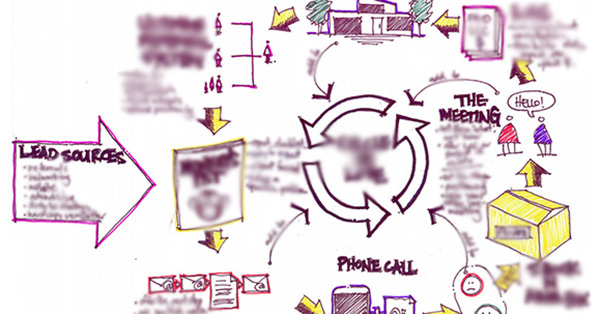
What is the 80/20 Principle?
The first month in the Architects Marketing Academy is all about working smarter, NOT harder. We like success to be as easy as possible.
Let me share with you a principle that I try to use every day. The goal is to achieve more with less.
Ready? Ok.
Look at your past projects and circle the projects where you made significant money.
Now look at your past projects and circle the projects where you felt satisfied with the work.
If you did the exercise, I would guess that 20% of the projects in each case were awesome, but 80% were just ok.
The Birth Of The 80/20 Principle
In 1906, Italian economist Vilfredo Pareto created a mathematical formula to describe the unequal distribution of wealth in England, observing that 20% of the people owned 80% of the wealth.
Feeling that England had become an economically unfair place, he was stunned when he applied it across European country borders. 20% of the people owned 80% of the wealth.
Then when he applied the same calculations back through time, he found the same thing: 20% of the people owned 80% of the wealth.
The Vital Few Versus The Trivial Many
After Pareto made his observation and created his formula, Dr. Joseph Juran, working in the US in the 1930s and 40s recognized a universal principle he called the “vital few and trivial many”.
As a result, Dr. Juran discovered that 20% of the defects on a production line were causing 80% of the problems.
The 80/20 principle is everywhere.
Don’t think this 80/20 principle just applies to wealth distribution and productivity.
Research tells us:
The top 20% of salespeople generate 80% of the sales.
The top 20% of authors sell 80% of the books.
The top 20% of criminals commit 80% of crime.
The 80/20 even works in reverse.
The bottom 20% of clients cause 80% of the problems.
Do you notice an 80% correlation with the clothes in your wardrobe? Do you wear 20% of your clothes 80% of the time?
Do you notice an 80% correlation with how you feel? Psychologists say that there are over 2,000 emotions yet we tend to experience only 8-12 of them 80% of the time.
How can we apply this to success in your business as an architect?
Simple, you ask 80/20 principle questions.
Who are the top 20% of your past clients? Find more like these.
How can we adapt your services, so you are the natural choice for these top 20% projects or clients?
Who else is selling or advising these top 20% clients?
If you won another three top 20% clients this year what would that mean for your business?
What are the bottom 20% projects or clients you should stop working with?
What happens to results if you could double the 20% factors to 40%?
You end up getting extraordinary results without extraordinary effort.
‘It's not about doing things right, it's about doing the right things’ Peter Drucker
Stop being all things to all people, stop doing any project that rolls to your door.
In summary:
Most of what you do has little impact on your results.
A vital few things you do create nearly all your results.
If you improve the vital few, you can easily achieve your target.
Happy Marketing!
For more information on how to market an architecture firm, visit our blog post about architect marketing and the diamond strategy that can change the way you look at marketing.
The Architects Marketing Flowchart For A Residential Practice:
This month we are giving away our marketing system flowchart for a residential architecture practice (this is the same system we teach in the Architects Marketing Academy).
Get it by clicking here.


Just listened to your seminar and would love to commit to the one-on-one session.
How can we make that happen?
Thanks Joshua Mulders
Alchemy Architecture – Sydney NSW Australia
Hi Joshua – You can book a one-on-one session using this link: https://archmarketing.org/80-20
Eric Bobrow, Co-Founder, Architect Marketing Institute
I watched the flow chart video. Since my business development staff and I often meet face to face with prospective clients, would it be acceptable to use the Client Survey form for these meetings? I like And agree with your statement that when you can control the questions, you gain control of the conversation. We have also noticed that uncovering underlying facts about the clients goals and needs, or site conditions can help you gain an advantage when preparing for a shortlist interview, which is very common in our área.
Michael Hoffer, AIA
Hahnfeld Hoffer Stanford
Architects Planners Interiors
Www.hahnfeld.com